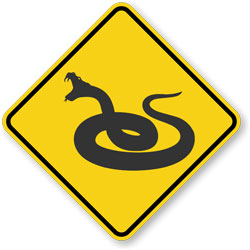
Almost a year has elapsed since our last visit to Reptilandia Reptile Lagoon [here’s our report of that tour]. At that time, the herpetarium consisted of 21 “temperate climate” exhibits in a single story wing, but work was underway on a new two-story wing that promised to more than double the size of the facility by adding “tropical climate” exhibits. That work was completed and the new wing was opened to the public in early September.
I didn’t think to count the number of new exhibits but we spent about two hours working our way through them and were greeted with impressive layouts at every turn.

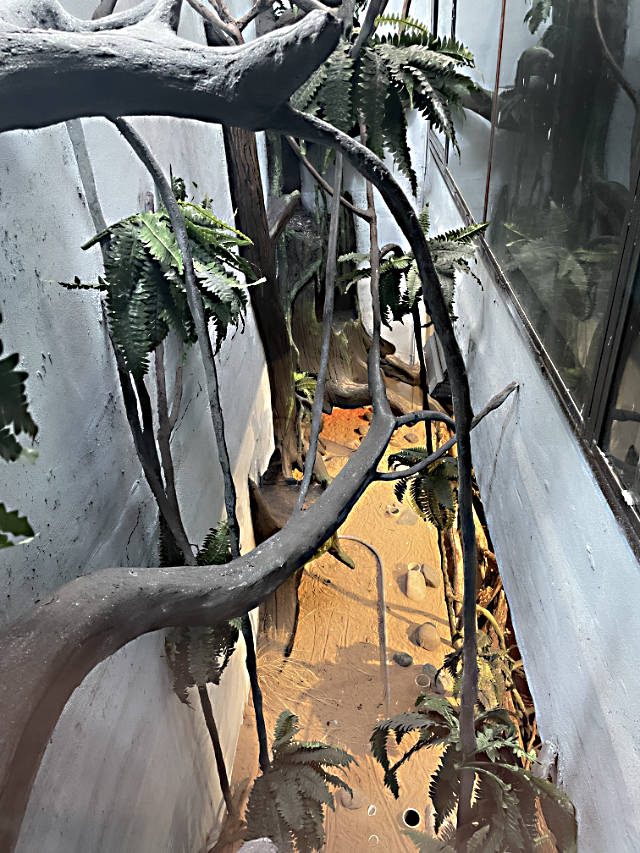
The second floor of the new wing is accessible via dual stairways (see below), but it is also wheelchair/walker accessible via an exterior entrance that is ramped.
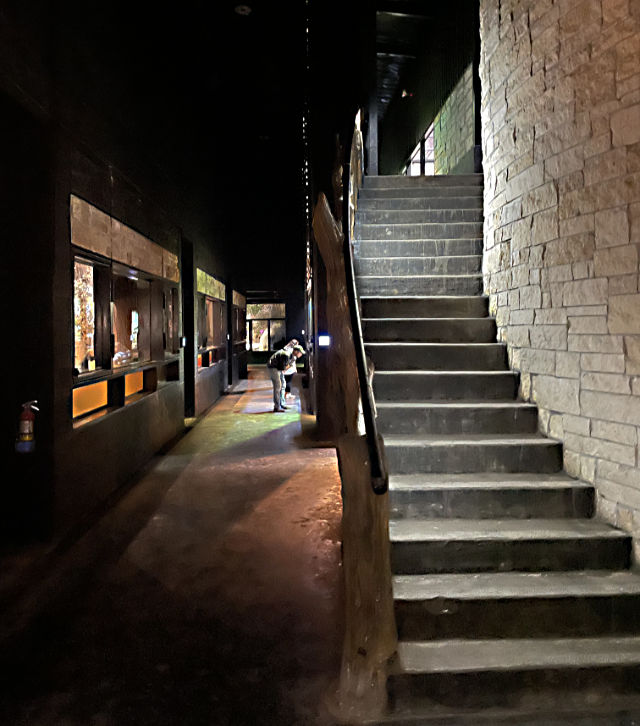
As before, each exhibit is paired with a digital display that gives basic information about the inhabitants. Many of the exhibits house multiple species, so the display screen continuously changes to identify each of them.
So, the facility is impressive, but the real stars are, of course, the inhabitants of those exhibits. Following are a few photos and videos of some that merited closer attention.
Up first is the sungazer lizard (Smaug giganteus), aka giant girdled lizard. This threatened species hails from South Africa, and if the genus rings a bell…you’re exactly correct in guessing its origin.
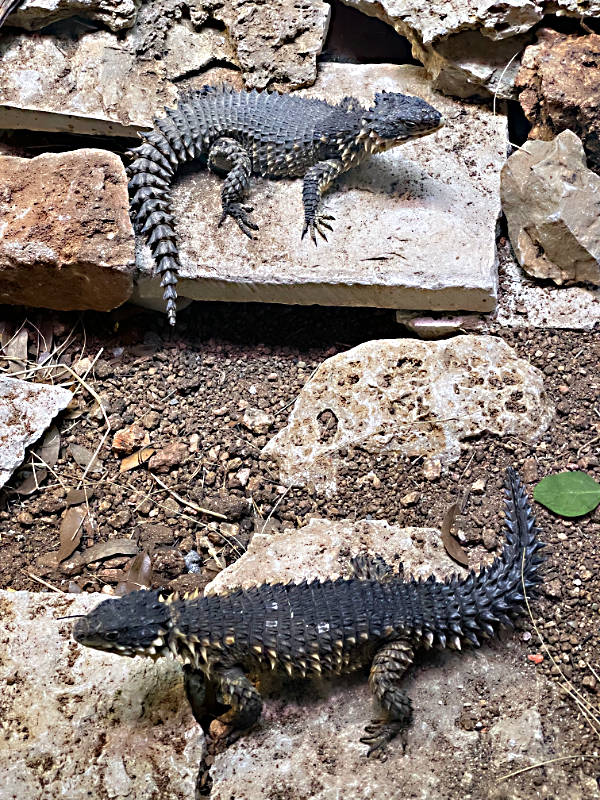
We were fortunate to see (and video) a showdown between one of the lizards and a cricket that was intended to be dinner. Things don’t always work out for the predator, though.
The woma python (Aspidites ramsayi) is a non-venomous constrictor endemic to Australia and is a fairly common species. According to this website, the snakes can grow up to almost nine feet in length but the average adult size is about half that length. They also have the advantage of being immune to the bites of venomous snakes, and are known to prey on them.
The Reptilandia exhibit housed several of these snakes, but one in particular was quite active while we were there. It seemed to be as curious about us as we were about it, although that is probably anthropomorphizing its behavior a bit too much. But it displayed an impressive ability to climb vertically up the glass, to the point where it and Debbie could literally see eye-to-eye.

The following video briefly demonstrates a behavior I’d never thought about before. Most snakes move using a wriggling motion; pythons don’t wriggle. Instead, they employ a “rectilinear progression” movement that employs opposing muscles connected to their ribs — and snakes have a LOT of ribs — to propel themselves forward. They’re smooth, but very slow.
While we’re on the subject of snakes, one of the species that we didn’t see on our previous visit is now on display in a corner of the zoo where one might overlook it, and that would be a shame. If I was in charge of deciding what went where, I’d have the highly venomous, strikingly beautiful Gaboon viper (Bitis gabonica) front and center.
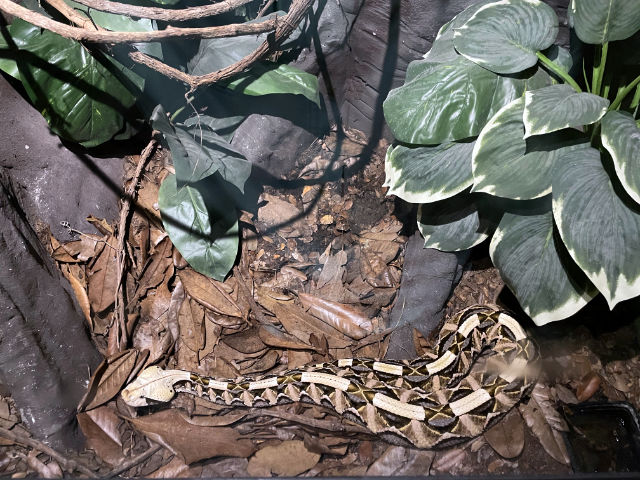
Gaboon vipers are endemic to the rain forest ecologies of sub-Saharan Africa. They are sluggish and are known to be generally non-aggressive. You can find YouTube videos of people handling them without gloves or other protection, because they are reluctant to strike unless stepped on or otherwise threatened. The “free handling” is still a pretty stupid thing, in my opinion, given that the snake has among the highest venom yields (amount of venom per bite) and has the longest fangs (up to 2″) in the world, and its venom is comprised of both hemotoxins and neurotoxins, a quite deadly combination. Fortunately, there is readily available and effective antivenom for a Gaboon bite; in fact, the same antivenom used in the U.S. for rattlesnake bites is effective, as well as a South Korean antivenom that was developed for a different species. And, finally, Gaboon vipers are said to have control of whether they inject venom along with a bite, so that all bites don’t result in actual envenomation. (I realize this is likely much more than you cared to know but I find it all pretty fascinating.)
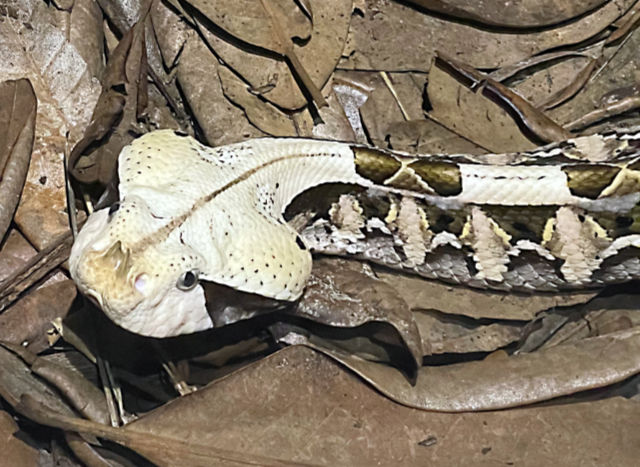
Let’s return to the lizards, shall we? Now, we know that dinosaurs no longer roam the earth, regardless of what they tell us in the Jurassic Park movie franchise…but how do you explain this:
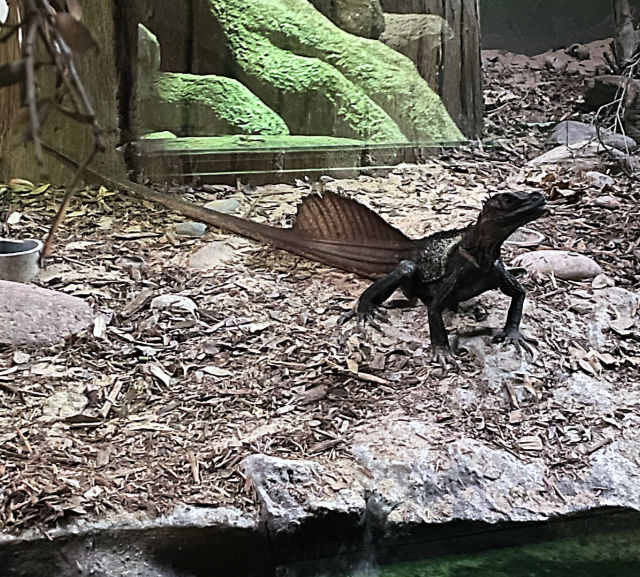
This is a sailfin lizard, aka sailfin dragon. It’s a member of the genus Hydrosaurus (which literally means “water lizard”), but I’m not sure of the exact species since I didn’t notice the accompanying display with the identification. They are native to the Philippine Islands and Indonesia. They are semi-aquatic, as you might guess, and the juveniles are able to run short distances over the surface of water thanks to their flattened/fringed toes.
Another interesting little lizard on display is the western bearded anole (Anolis barbatus), a native of Cuba. It’s about seven inches in length, and to my eye looks more like a chameleon than an anole. And here’s another word I’d never heard before: autotomize. Autotomy, and more specifically, caudal autotomy, is the ability of certain lizards, salamanders, and tuataras (look ’em up) to “self-amputate” or drop their own tail. I highly recommend the preceding link, and especially the section entitled “Effectiveness and Costs” for some interesting reading. Anyway, I bring this up only because the bearded anole, unlike other anole species, lacks the ability to autotomize its tail. I doubt that this bothers them much.
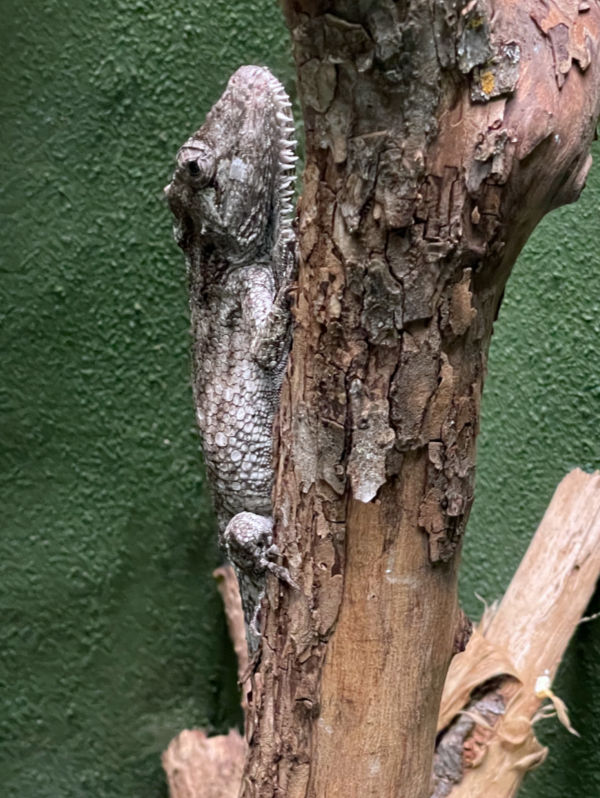
I’ve saved the most impressive lizardly specimen for last: the mighty Komodo dragon (Varanus komodoensis). This is, of course, the largest lizard on the face of the planet. The largest specimen was just over ten feet in length and weighed 366 pounds (keep in mind that this was one in captivity and the weight included its most recent undigested meal). This article on the Smithsonian’s National Zoo’s website has some additional interesting facts, including a description of why getting bitten by a Komodo is a Very Bad Thing.
Reptilandia has a beautiful specimen in a very large exhibit, befitting a very large animal. I didn’t take a still photo, but I think the following video better captures both the lizard and the habitat in which it now resides.
I’ve provided a mere snapshot of all that Reptilandia has to offer. I didn’t touch on its museum exhibits, nor its small exhibit of newly-birthed or -hatched reptiles, nor its small (and a bit dimly-lit) gift shop. (I also slighted the chelonian population that is showcased in multiple exhibits, but in my defense, turtles and tortoises need to up the excitement factor to compete with giant lizards and deadly serpents, TMNTs notwithstanding.) They’ve even let at least one amphibian — an Axolotl, the very cute Mexican salamander, whose superpowers include the ability to regenerate things like their central nervous system and “less vital parts of their brain” (which I believe are those parts most used by bloggers) — slip in amongst the reptilian general population.
Reptilandia’s website doesn’t do justice to everything the facility has to offer. As I said in my previous review, if you have even a passing interest in the diverse world of reptiles, a visit (and repeat visits) to Reptilandia will be well worth your time.

Update: For more information about the history of Reptilandia, and its founder, take a look at this report via 101 Highland Lakes, a regular newsletter highlighting places and events in the Texas Hill Country.
Discover more from The Fire Ant Gazette
Subscribe to get the latest posts sent to your email.

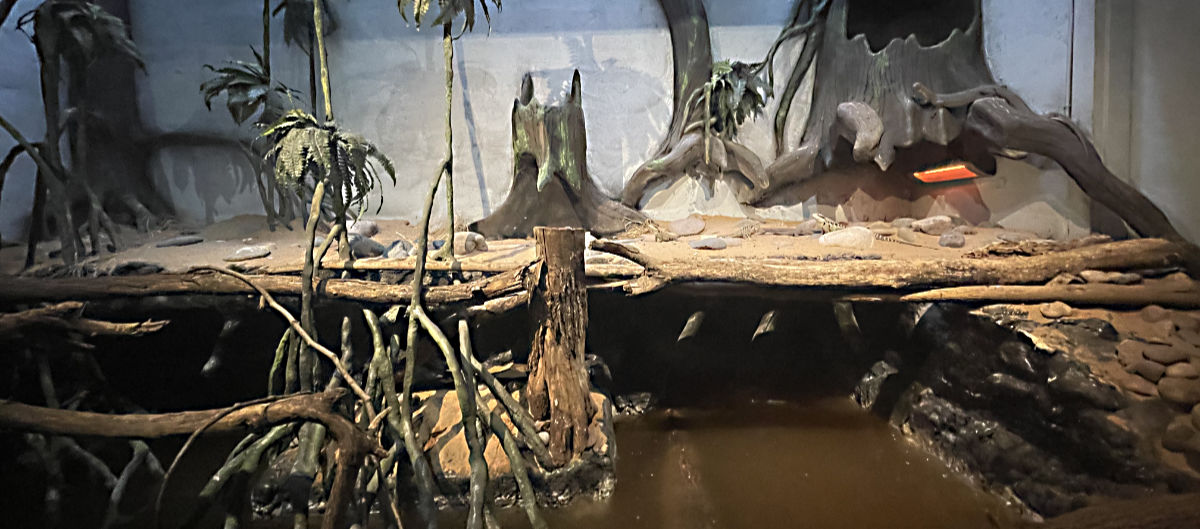
My NatGeo for today, very cool!
Glad you enjoyed, Lee…I sorta geeked out putting it together. 😆